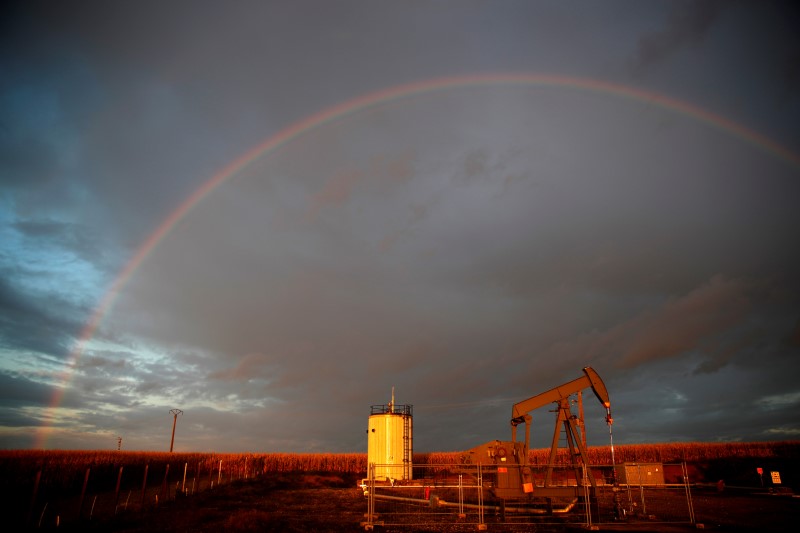 © Reuters. A rainbow is seen over a pumpjack during sunset outside Scheibenhard
© Reuters. A rainbow is seen over a pumpjack during sunset outside ScheibenhardBy Henning Gloystein
SINGAPORE (Reuters) – Oil markets stabilized on Monday after slumping around 2 percent last Friday on the back of concerns of an intensifying trade dispute between the United States and China, as well as increased U.S. drilling activity.
U.S. WTI crude futures () were at $62.17 a barrel at 0019 GMT, up 11 cents, or 0.2 percent, from their previous settlement.
Brent crude futures () were at $67.23 per barrel, up 12 cents, or 0.2 percent.
Oil prices fell about 2 percent on Friday after U.S. President Donald Trump threatened new tariffs on China, reigniting fears of a trade war between the world’s two largest economies that could hurt global growth.
“While it’s possible an escalating trade war could dent global growth sentiment, the real fear is that China, if pushed hard enough, could slap a tax on U.S. oil imported into China,” said Stephen Innes, head of trading for Asia/Pacific at futures brokerage OANDA in Singapore.
In physical oil markets, OPEC’s number two producer Iraq said on Monday that it is keeping prices for its crude supplies in May steady.
In the United States, drillers added 11 rigs looking for new production in the week to April 6, bringing the total count to 808, the highest level since March 2015, General Electric’s (N:) Baker Hughes energy services firm said on Friday.
As a result, U.S. exports have soared in recent months, “more than offsetting the Venezuelan supply disruption” as a result of the economic crisis in the South American OPEC-member, Innes said.
Despite this, oil prices have generally been supported by healthy demand as well as by supply restraint led by the Organization of the Petroleum Exporting Countries (OPEC), which started in 2017 in order to rein in oversupply and prop up prices.
Fusion Media or anyone involved with Fusion Media will not accept any liability for loss or damage as a result of reliance on the information including data, quotes, charts and buy/sell signals contained within this website. Please be fully informed regarding the risks and costs associated with trading the financial markets, it is one of the riskiest investment forms possible.
Source: Investing.com





























